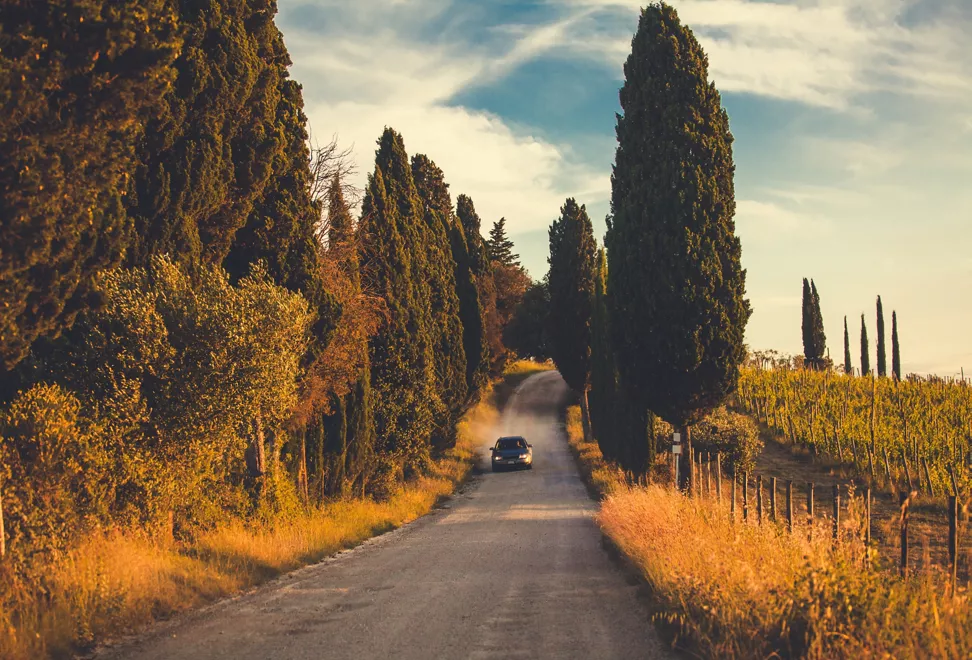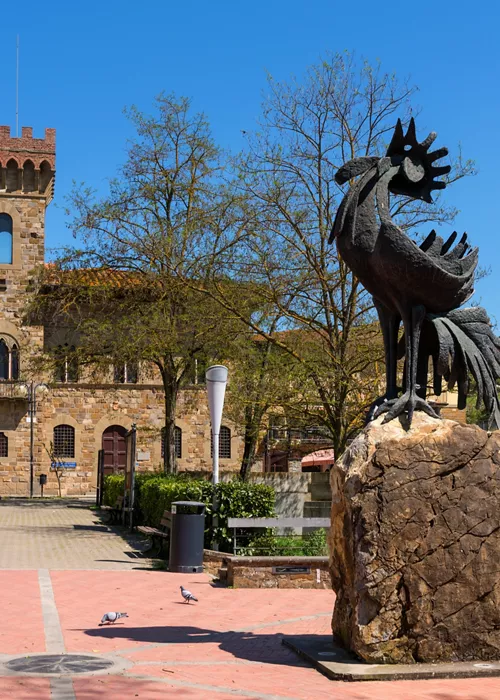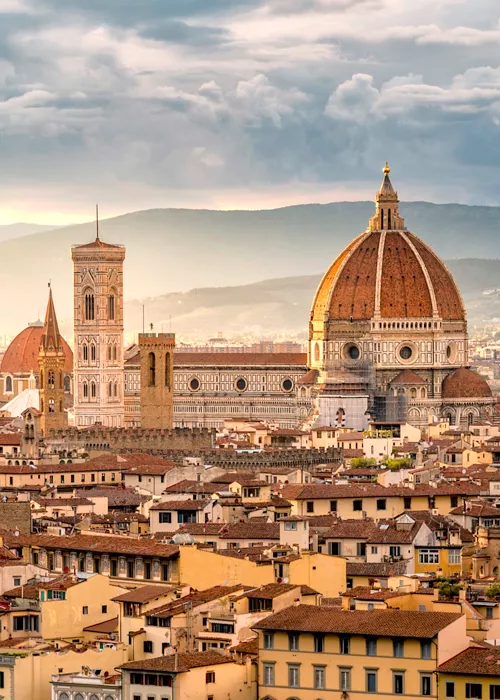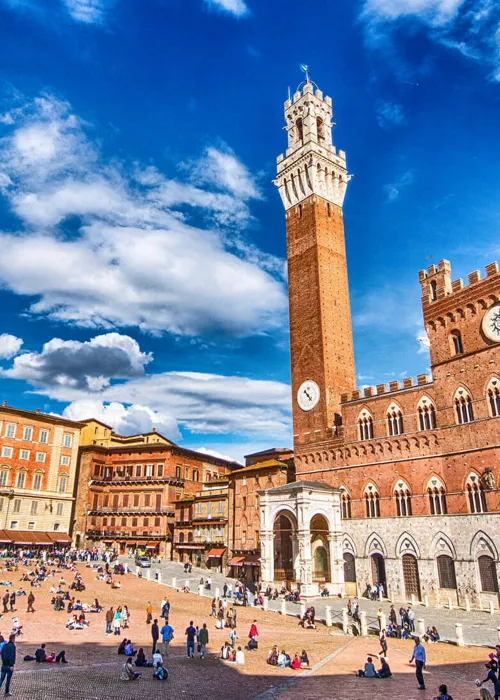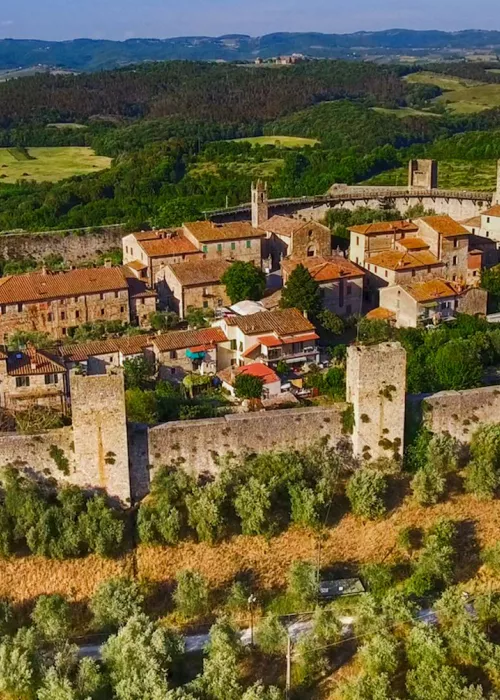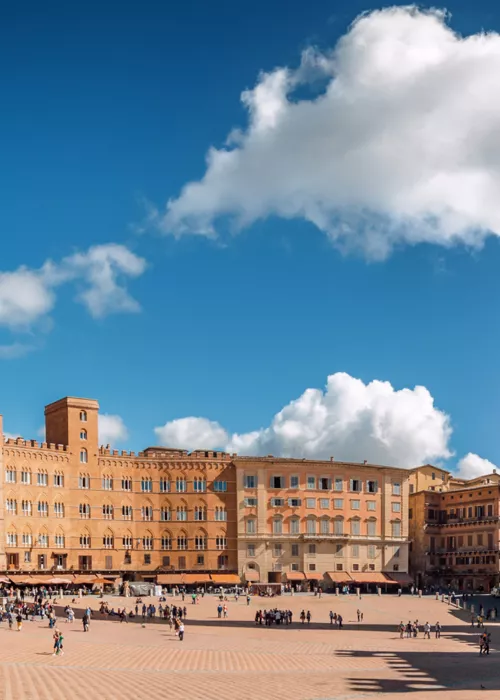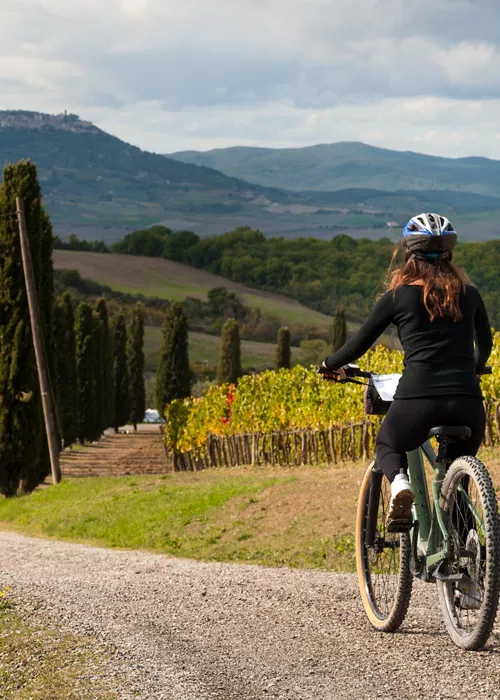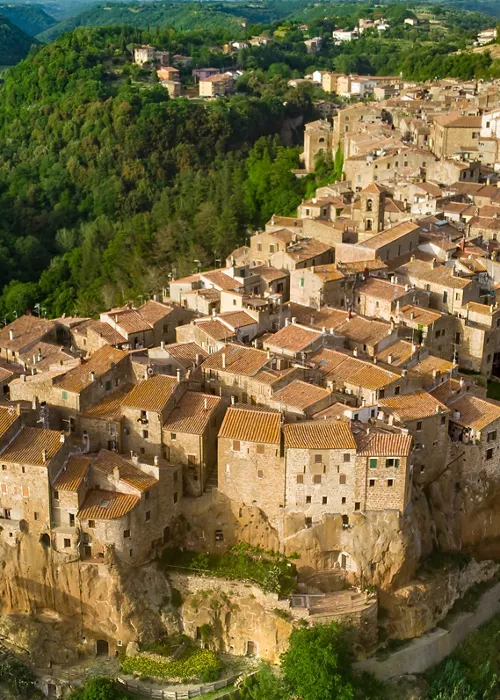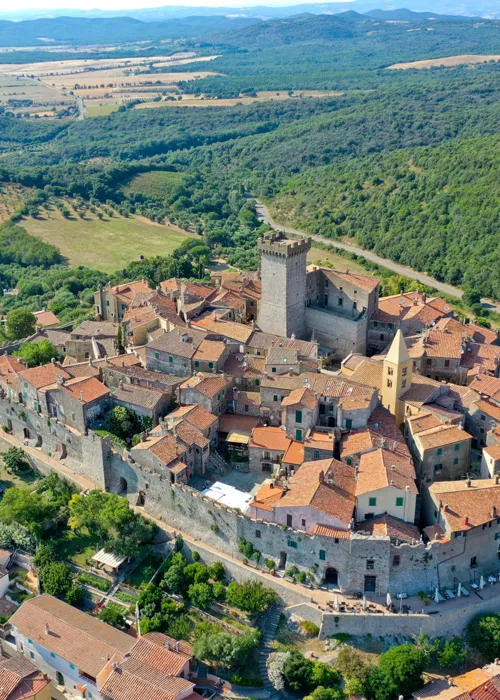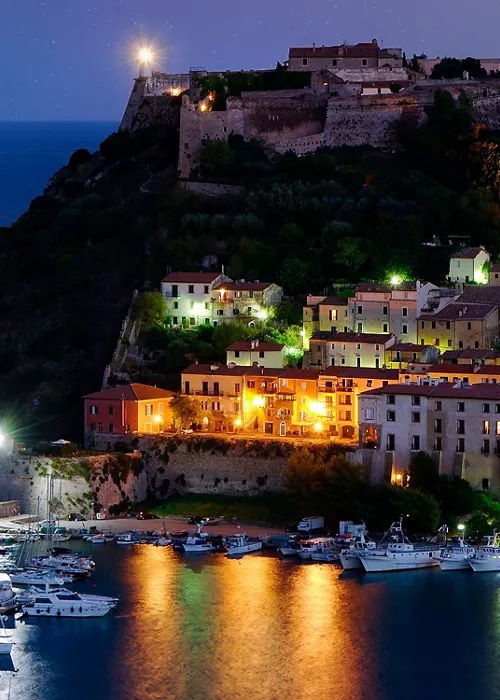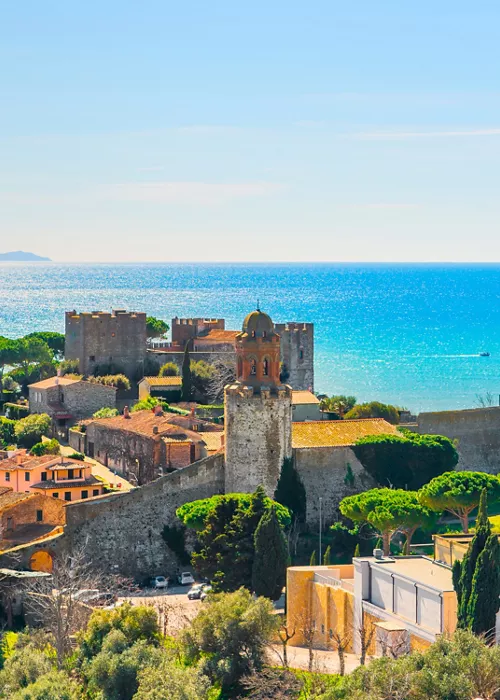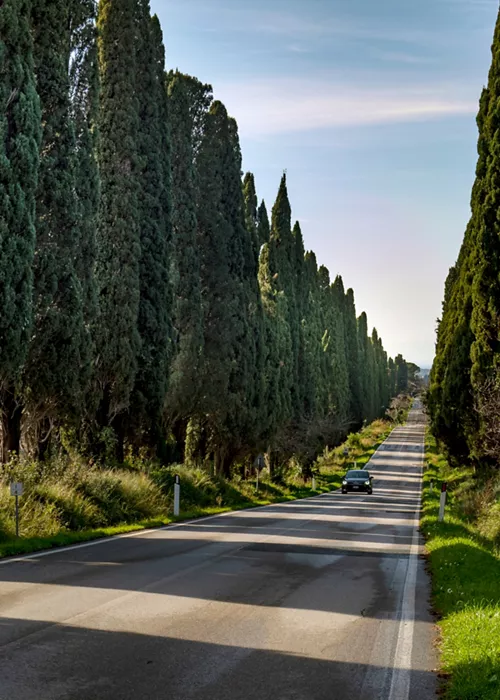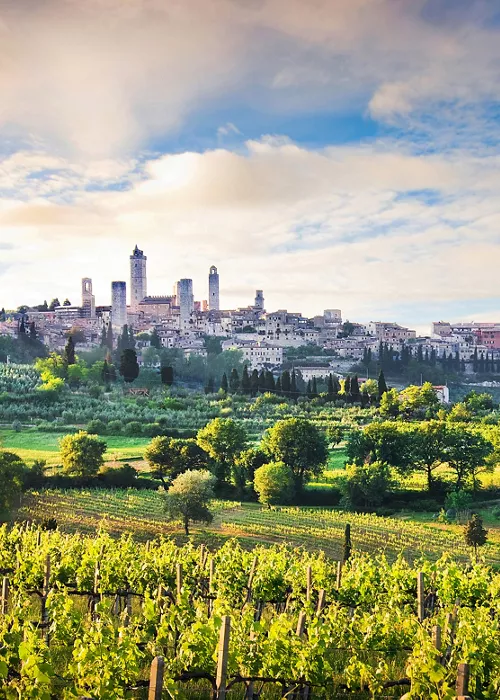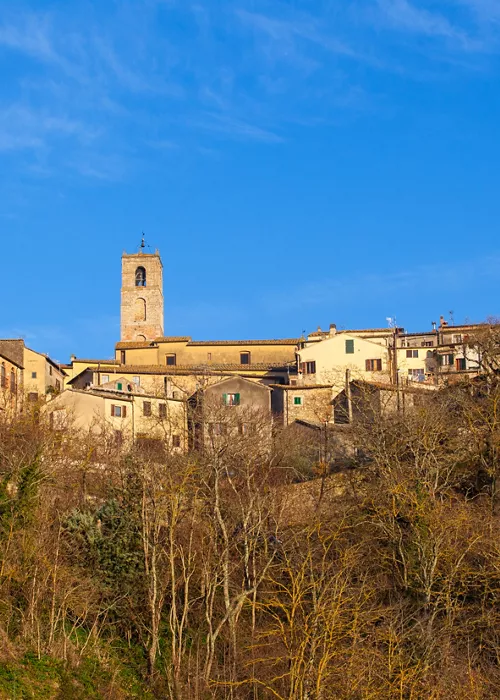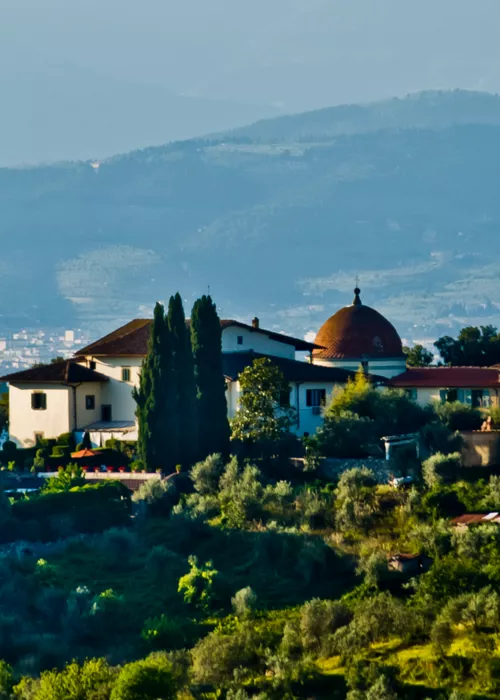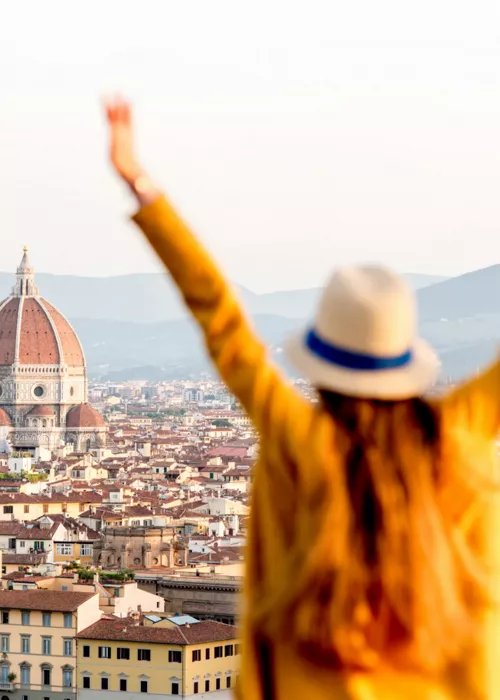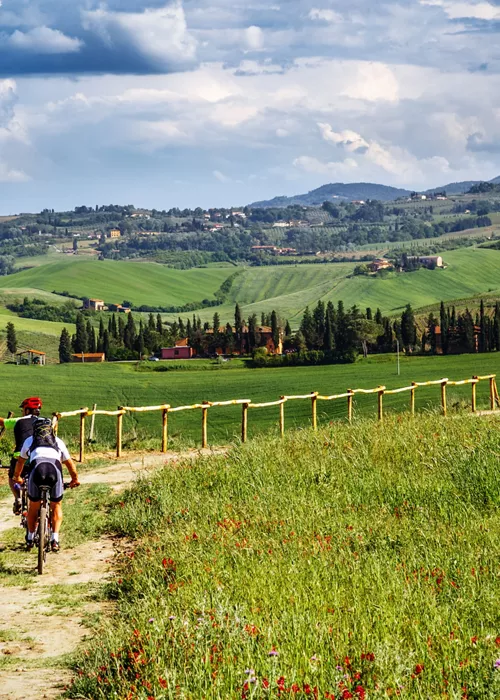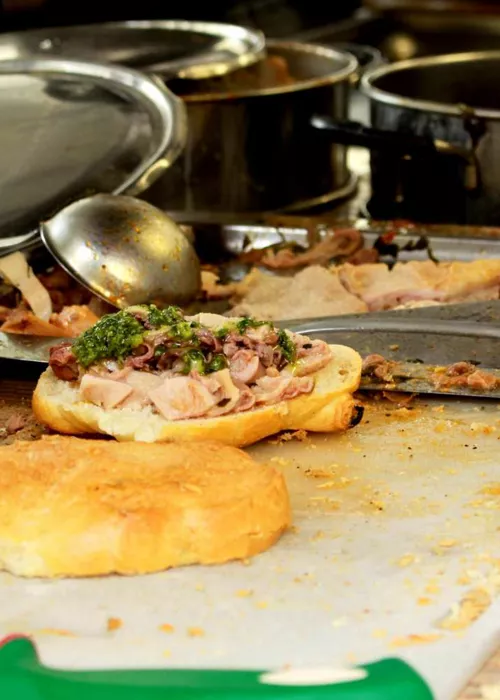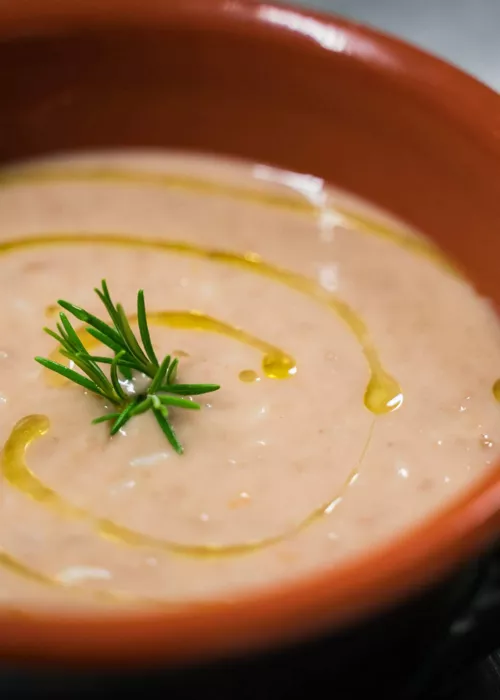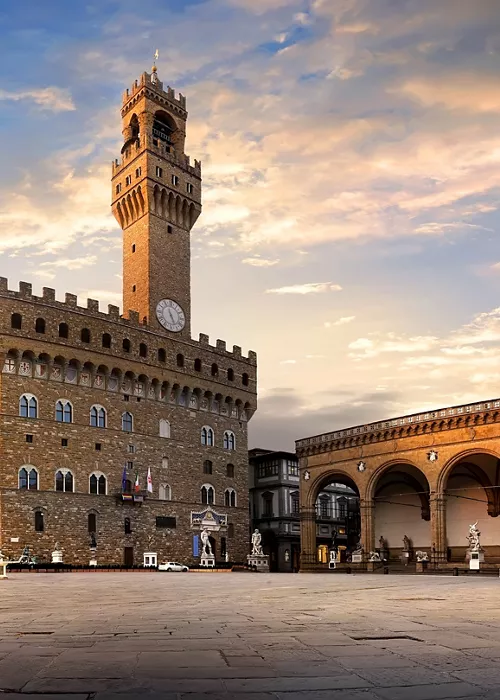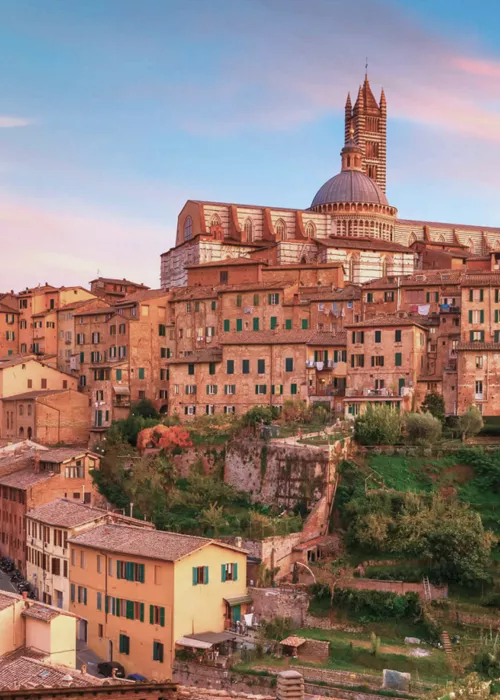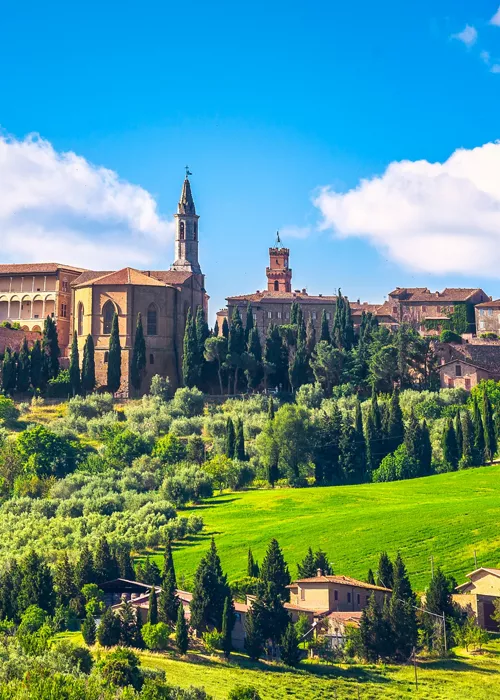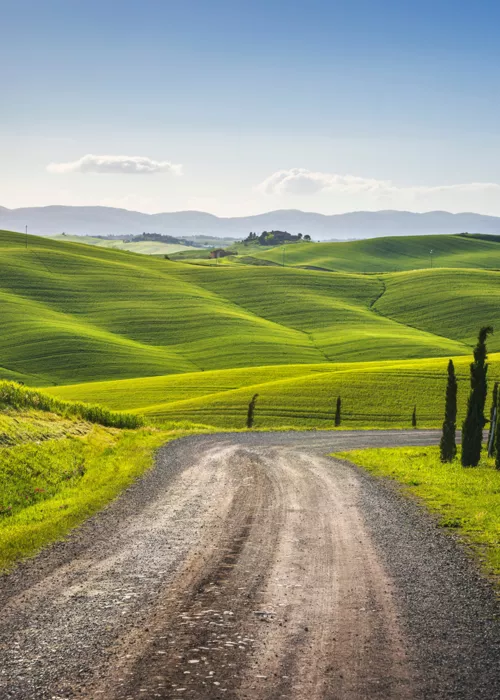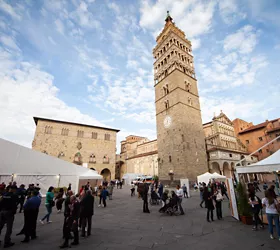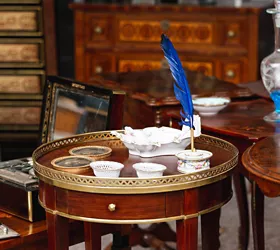Tuscany by car surrounded by nature, art and unique flavors
7 minutes
Index
For centuries, Tuscany has charmed any "outsiders" with its timeless beauty, which in full display in the images, films, photo galleries and social profiles across the world, is known to travelers everywhere. Landscapes that are a parade of hills, valleys, and highlands all the way to the sea, ever changing with the changing of the seasons, passing from the triumph of summer and the immense expanses of sunflower fields everywhere, to the warm shades of autumn, when the leaves bring in their romantic, melancholic tones. Our tour in the discovery of the wonders of Tuscany can only start from Florence: a couple of days in the city of Dante are a must, there are so many things to do and see. After having filled the spirit with the beauty of Florence, you are ready to discover the Tuscany of villages, vineyards, countryside, and the many DOC and IGP products that you will meet along the way.
Greve, the capital of Florentine Chianti
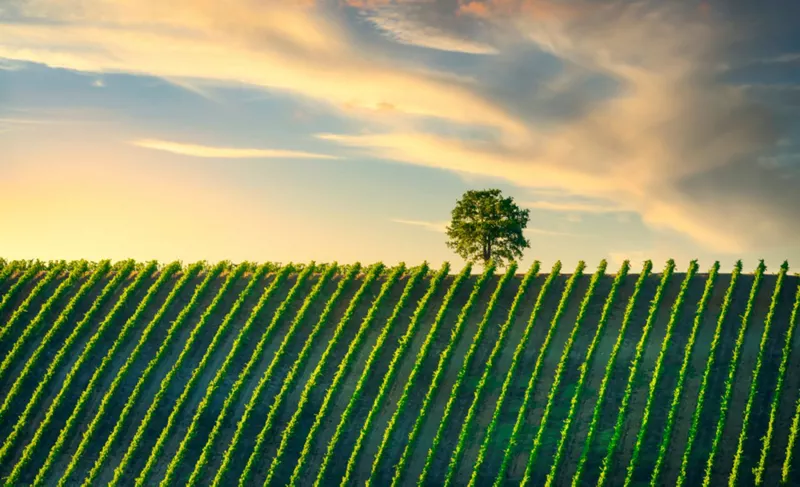
Following the directions from Florence South towards Siena, the road trip of Tuscany begins travelling along regional road 222 (Chiantigiana) that from the outskirts of Florence winds along the Apennines and crosses many landmarks, all worthy of a stop. After all, and never as much as in this case, the journey is not the destination: enjoy your trip! An interesting stop along the way is Greve in Chianti, a small village whose downtown square has served as a market place since the Middle Ages. Built because of its closeness to the castle of Montefioralle, thanks to its strategic position between Valdarno, Val di Greve and the road that joins Florence to Siena through the Chianti Hills, this village became the main commercial center of the area. Today, its historical center hosts taverns, restaurants, commercial and artisan shops. Here you will also find a Wine Museum where you can learn about ancient traditions and modern processes of the Tuscan winemaking world.
Monteriggioni, impregnable and hospitable
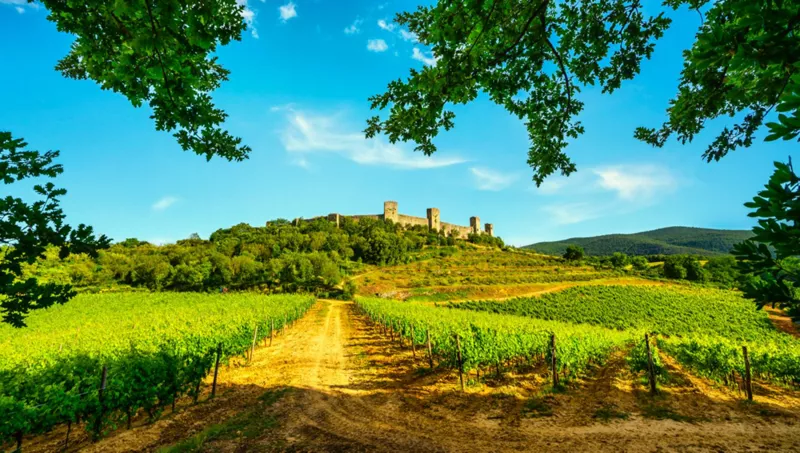
Continuing on the SR 222 towards Siena, near Castellina in Chianti take the SP 51 towards Monteriggioni: passing through the twelfth century village overlooking the valley is a must. The village is still protected by the imposing walls made of stone (almost 600 meters long) in which 15 square towers are set. Surrounding the high ground on which the village stands, orderly vineyards span as far as the eye can see: the grapes that contribute to the great success of Tuscan wines across the globe come from here, too. Many wineries offer tours to their facilities or tasting sessions on site. Among Chianti Classico, Chianti dei Colli Senesi and Bianco di Toscana, you will be spoilt for choice.
Siena, all the flavor of the Palio city
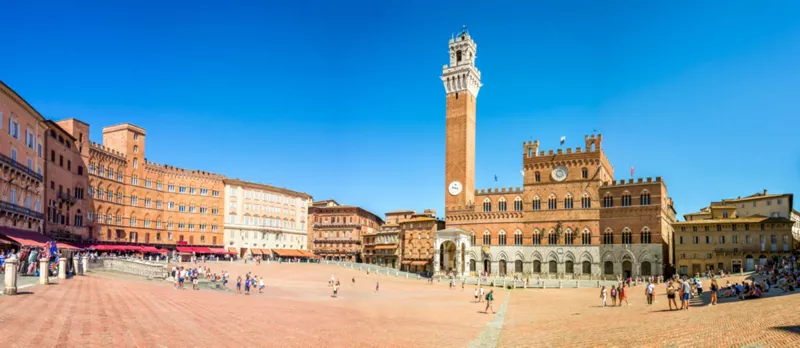
From Via Cassia Nord just outside Monteriggioni, take the Firenze Siena highway junction and continue to the Siena Ovest exit, then follow the signs to the city center. A beautiful jewel, Siena has preserved intact all its charm and the power that over the centuries made it a center of vital importance for the social, economic and political (as well as artistic) life of Tuscany first and then of all Italy. Around the ancient village there are free or paid parking lots to forget - at least for a few hours - about the car and venture on foot to the beautiful Piazza del Campo, Siena’s symbol and the location where the famous Palio is held.
San Quirico, the jewel of Val d'Orcia
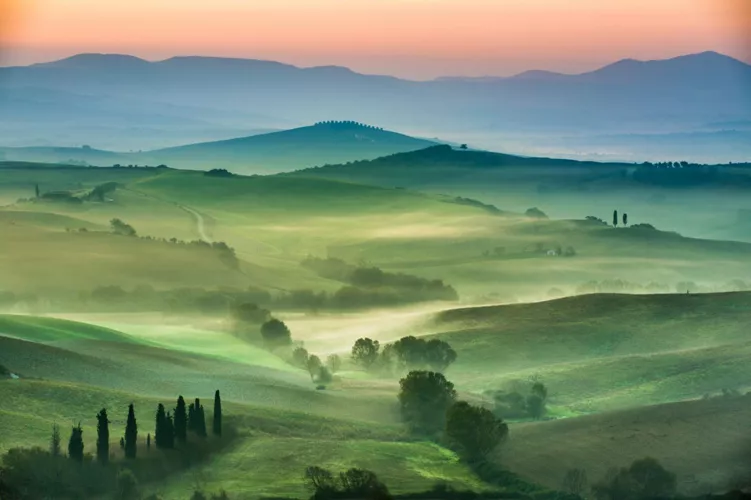
Moving from Siena towards San Quirico D'Orcia, you will cross the Val D'Orcia Park, recognized by UNESCO as a World Heritage Site for the beauty of its landscape. Here there are itineraries and routes to explore between places and flavors that will reward both body and soul. If you're looking for the most Instagrammed (and Instagrammable) Tuscany locations, in this stretch of road you can really unleash your social spirit.
Pitigliano, the echoes of ancient times in Maremma
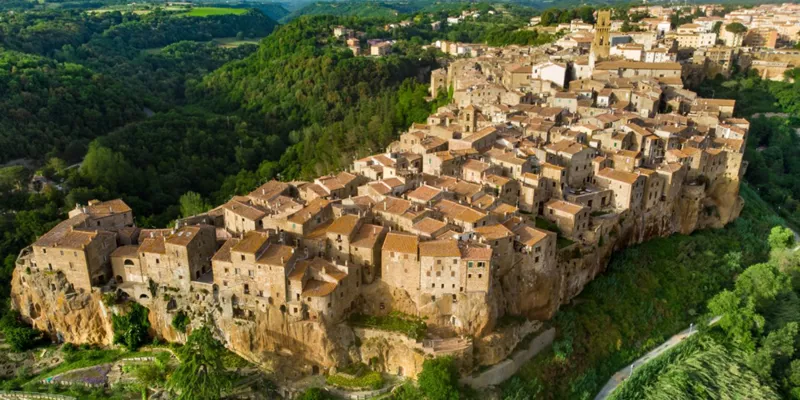
Travel on the SR 2 towards Acquapendente, take the provincial road Torretta heading towards Grotte di Castro and then continue on the SR 74 towards Pitigliano. Listed among the Most beautiful villages in Italy, Pitigliano boasts a wine that bears its name and is located in the heart of Tuscan Maremma: Pitigliano (also nicknamed The Little Jerusalem, because since the sixteenth century it has hosted a large Jewish community within its walls) is now one of the most charming historical villages of Italy. Perched on a tuff cliff, the village overlooks the valleys of three streams (Lente, Meleta and Prochio) and offers a wonderful view of the wild and unspoiled nature of this area of Maremma.
Capalbio, a living room across the centuries
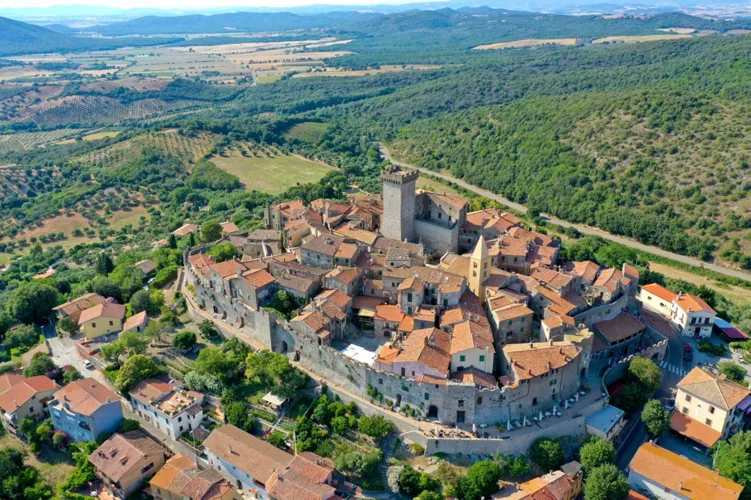
Perched where the Maremma overlooks the Tyrrhenian Sea, Capalbio has also a "seaside" area in summer that becomes the meeting place of people from all over Europe and for this reason it is nicknamed the Little Athens. Surrounded by a lush ecosystem, the ancient village - listed among the "Most Beautiful Villages of Italy" - features Etruscan, Roman and Renaissance architecture. Entering through the Senese gate you will find yourself immersed in another era, especially when exploring the narrow streets around the Aldobrandesca Fortress.
Porto Ercole, obiettivo glamour
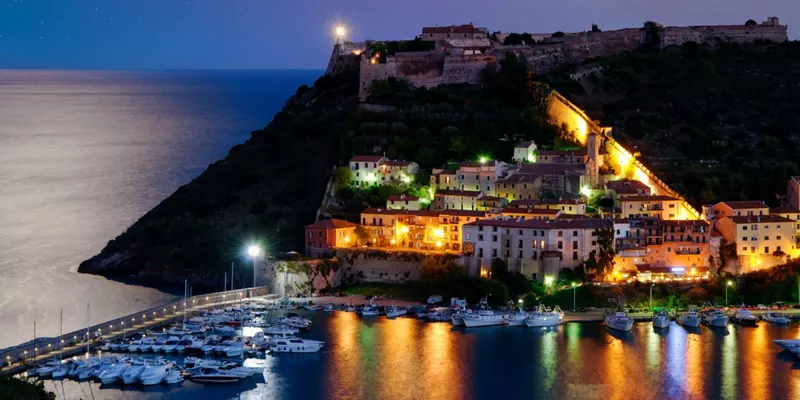
From Capalbio, to end this day of travel across Tuscany, it is time to head to the beach. Protected by natural inlets that make it a small jewel, Porto Ercole, is one of the masterpieces of the whole Argentario. The name alone evokes glamour and nightlife, so a dinner by the sea and a romantic walk among its narrow streets before going to bed are a must.
Castiglione della Pescaia, between land and sea
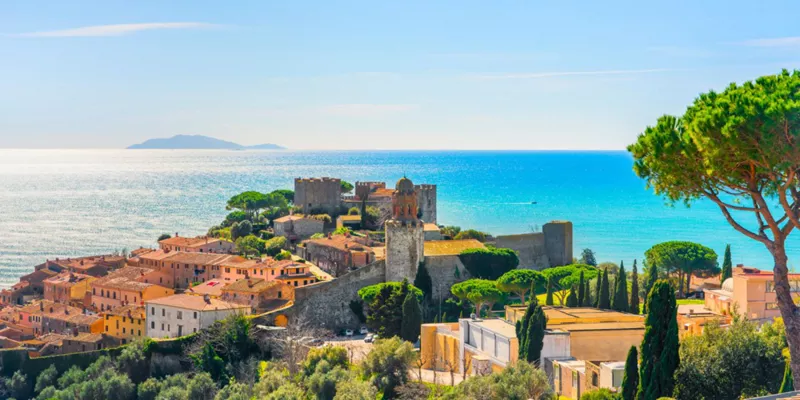
A good breakfast in Capalbio, then back in the car to continue the journey that started yesterday in Florence. Following the coastline of the Tyrrhenian Sea, heading up the E80, in a few kilometers you will discover another jewel of the Etruscan coast: Castiglione della Pescaia whose port enjoyed a long period of prosperity between the eighteenth and nineteenth centuries. There are many buildings and monuments to admire here, proof of the past and history of this rich area. It is worth visiting the Casa Rossa Ximenes, of Renaissance origin, the Palazzo del Pretorio, the Church of Santa Maria del Giglio and the Church of San Giovanni Battista.
Castagneto Carducci, poetry is at home
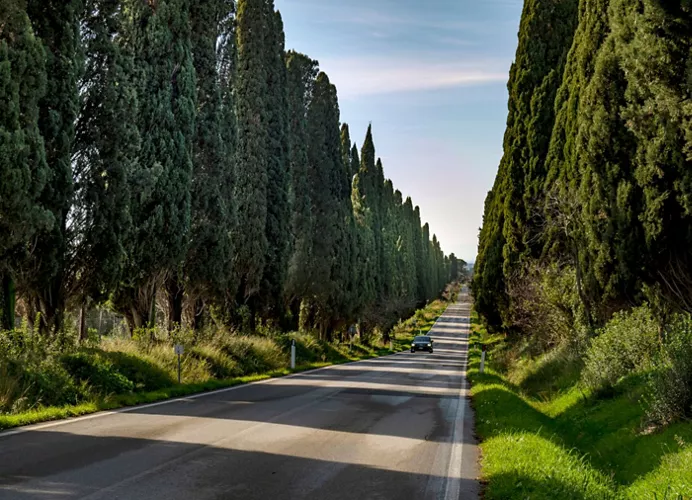
Leaving Castiglione, head back on the E80 towards Donoratico, then, when the road leads to the hinterland, you will reach Castagneto Carducci. A small village with ancient traditions, Castagneto is among the most popular places of the Etruscan Coast. Perched on a hill a few miles from the sea, the town of Castagneto was built around the imposing medieval castle standing on the highest point of the village. The nearby Bolgheri, with the cypress trees protagonists of Carducci’s famous poem, is a truly iconic symbol of the Tuscan countryside.
San Gimignano, the Manhattan of the Middle Ages
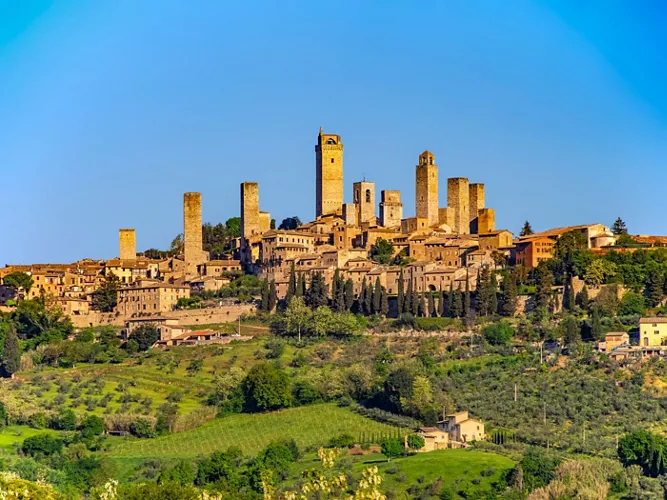
The journey from Castagneto continues along provincial road 329 until you are back on the E80 (towards Cecina). Turn on the provincial road 29 and then head towards San Gimignano. With its rising towers well visible on the horizon, it is truly one of the most iconic and famous destinations across Tuscany. Located in the heart of the Val d'Elsa, it is the ideal place to immerse yourself in a perfectly medieval atmosphere. Protected as a UNESCO World Heritage Site since 1990, San Gimignano owes its fame to the incredible number of towers built from the XIV century onwards. Today there are only 13 left, but they have contributed to giving the village the nickname of Manhattan of the Middle Ages.
San Casciano Val di Pesa, noble origins
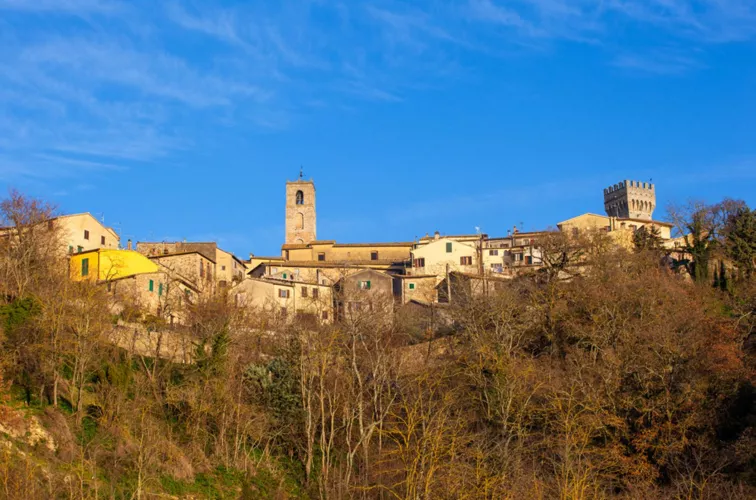
Gateway on the hills cultivated with Chianti, San Casciano in Val di Pesa has many churches that are worth a visit, such as the Santa Cecilia a Decimo Parish, located just outside town, mentioned in a document by Charlemagne in 774 and probably the oldest in the area, then the Romanesque San Giovanni in Sugana Parish or the Santo Stefano a Campoli (903) Parish, near Mercatale Val di Pesa. Finally, in these parts, there is "Il Palagio", the estate (which can be toured) where Sting, the leader of The Police, loves to spend his time and where excellent wines are produced. The address? Via Campoli 98, in the hamlet of Mercatale Val di Pesa.
Impruneta, the land of clays
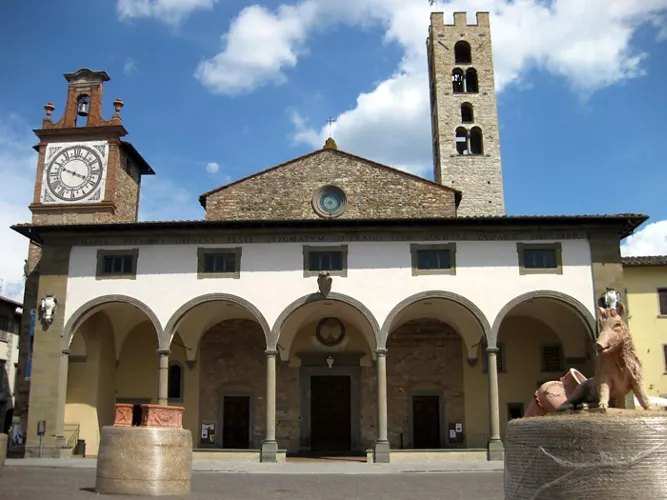
Approaching Florence from the countryside, leaving San Casciano in Val di Pesa and heading towards Impruneta, the penultimate stop of the tour before returning to the city of the lily (Florence). After valleys, hills, vineyards, parish churches and villages of unique charm, it is the last stop to be able to say to have completed a worthwhile tour. The clay found in Impruneta and the surrounding areas is particularly suitable for creating a durable and resistant material, baked in ovens to make it acquire its strength and characteristic orange color. Today there are still active furnaces that follow the old production techniques, dating back to the end of the year 1000, to produce items that are sent from here to conquer gardens all over the world. We, on the other hand, head back to Florence (the last 15 km) where this two-day on-the-road trip across Tuscany comes to an end.

